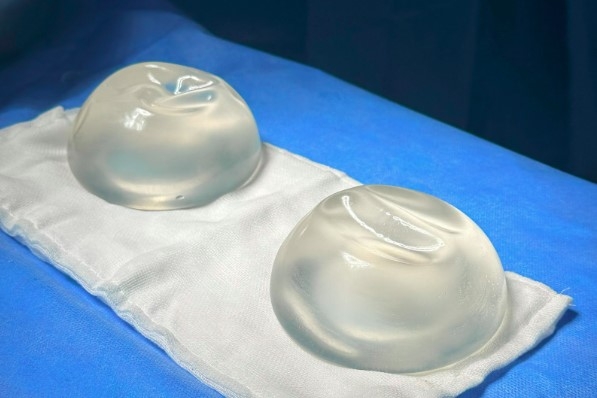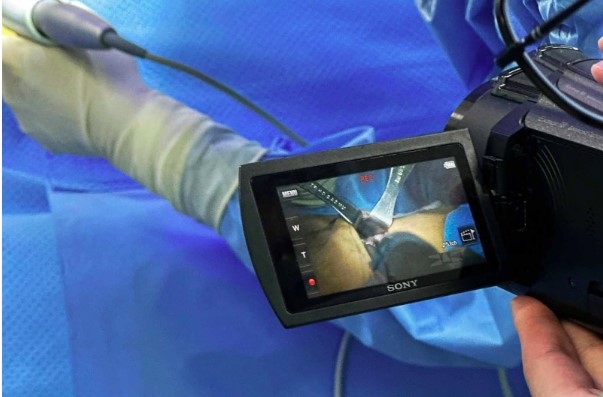The Risks of Improper Breast Implant Removal
VOV.VN - Improper breast implant removal poses significant risks, including prolonged infections and serious health complications for patients. What is the safest way to proceed?
Many women opt to have their breast implants removed due to changes in breast shape following childbirth, sagging over time, a desire to reduce breast size, complications such as implant rupture, capsular contracture, allergic reactions to implants, or infections. However, breast implant removal is not a simple procedure. It often carries potential early and long-term complications that women need to carefully consider before undergoing the surgery.
Dr. Ho Cao Vu discusses the complications associated with implant removal:
Complications of Implant Removal
*Unclean implant pockets containing residual pseudomembranes, necrotic tissue, blood clots, and fluid exudate.
Patients experiencing post-procedural abnormalities such as infections, abscesses, excessive bleeding or fluid drainage, and delayed wound healing are often prescribed high-dose antibiotics over an extended period. While this treatment may alleviate unusual pain or discomfort caused by infections within the pocket, improperly managed or untreated infections can persist silently. Over time, these issues lead to the accumulation of contaminated fluid, blood clots, and mucosal pseudomembranes within the implant pocket.
For such cases, implant replacement becomes impossible. Surgeons must perform a secondary procedure to thoroughly clean the implant pocket, conduct antibiotic susceptibility testing, insert drains for monitoring, and perform continuous irrigation until the pocket stabilizes.
*Non-Adherent Pockets After Implant Removal Surgery
In cases where implant pockets are affected by abnormalities such as infections, capsular contracture (grades 1 to 4), ruptured implants, or the use of textured or smooth implants, different surgical techniques are required for implant removal. Many cases have been reported where, after implant removal, pockets fail to adhere, excessive tissue is excised, or gel residue remains in the cavity. These issues can result in infections, making it impossible to place new implants in subsequent surgeries.
*Infections from External to Internal Sources with Delayed Wound Healing
If internal infections are not thoroughly addressed, wounds may heal poorly or take an extended time to recover. For open wounds, improper wound care can lead to cross-infections from external to internal sources, causing delayed or incomplete wound healing. Prolonged infections not only hinder the recovery process but also negatively impact the overall health and immunity of the patient.
Case of managing an inflammatory cavity - debridement, elimination of recesses, and irrigation of a soft tissue abscess
Ms. TT, born in 1990, with a height of 1.62m and weight of 52kg, underwent multiple breast augmentation procedures before seeking assistance from Dr. Ho Cao Vu.
· First procedure: In April 2022, she underwent breast implant placement at another facility but experienced complications of an abscess, necessitating implant removal in the second procedure.
· Third procedure: In December 2023, she had implants placed at another aesthetic center. Postoperatively, fluid accumulation was detected, leading the surgeon to remove the implants again, place drainage, and discharge the patient.
· Fourth procedure: After undergoing an ultrasound and receiving negative infection test results, she expressed her desire to have implants reinserted. On December 17, 2024, Dr. Ho Cao Vu performed the surgery. During dissection of the chest cavity using an ultrasonic scalpel, abnormalities were observed.
The previously created pocket had a thin capsule with scattered pseudomembranes along the recesses within the cavity. The left chest cavity contained clusters of white pseudomembranes, while the right chest cavity presented yellowish fluid and clumped pseudomembranes. This indicated poor cavity hygiene, resulting in inflammation.
Additionally, on the left side, the entirety of the pectoralis major muscle below the 4th, 5th, and 6th ribs remained intact and uncut. Dr. Vu decided to contact the patient’s family to agree on the approach of removing the recesses, partially excising the pocket in the lower areas of both the right and left breasts, followed by thorough irrigation using hydrogen peroxide, Betadine, and saline. Post-surgical irrigation drainage was placed, and pseudomembranes were collected for antibiotic sensitivity testing, histopathological analysis, and tuberculosis bacterial examination.
Case of managing a chest cavity abscess with delayed wound healing
This case involves a patient who underwent breast augmentation and areolar reduction on November 28, 2024, with an inframammary incision. Postoperatively, she experienced symptoms of pain, swelling, and discomfort. Ten days after returning to the aesthetic center for suture removal, she developed fever, a bitter taste in her mouth, chills, and was prescribed intravenous antibiotics, oral antipyretics, and anti-inflammatory medications. Upon re-examination three days later, the surgeon identified abnormalities, including yellow fluid draining from the cavity. The decision was made to remove the breast implants, leave the wound open without drainage, and continue medications.
The patient remained anxious as the open wound continued to drain fluid after implant removal. She sought consultation with Dr. Ho Cao Vu. Upon clinical examination, Dr. Vu observed pale red fluid draining from the cavity through the open incision, which was entirely connected to the implant pocket. The doctor ordered tests to assess the infection and formulate an appropriate treatment plan. The patient underwent continuous wound irrigation for seven days at the center.
Safe Breast Implant Removal with Laryngeal Mask Anesthesia
Laryngeal mask anesthesia offers significant advantages for both patients and children. This technique is not only easy to perform for surgeons and technicians but also minimizes the risk of laryngeal trauma during the procedure. Moreover, laryngeal mask anesthesia causes less airway irritation, allowing patients to recover from anesthesia more comfortably, with fewer side effects compared to endotracheal intubation.
Dr. Ho Cao Vu routinely employs laryngeal mask anesthesia for standard breast implant removal surgeries, in combination with an ultrasonic scalpel. This approach ensures bloodless procedures with no tissue damage, allowing for a trauma-free implant pocket removal technique.
Postoperative outcomes are highly favorable: patients experience no pain, require no downtime, and are discharged within six hours without needing painkillers or antibiotics. This safe and comfortable method has been unanimously supported by the anesthesiology team as the optimal choice for ensuring patient safety and comfort during and after breast implant removal surgeries.




